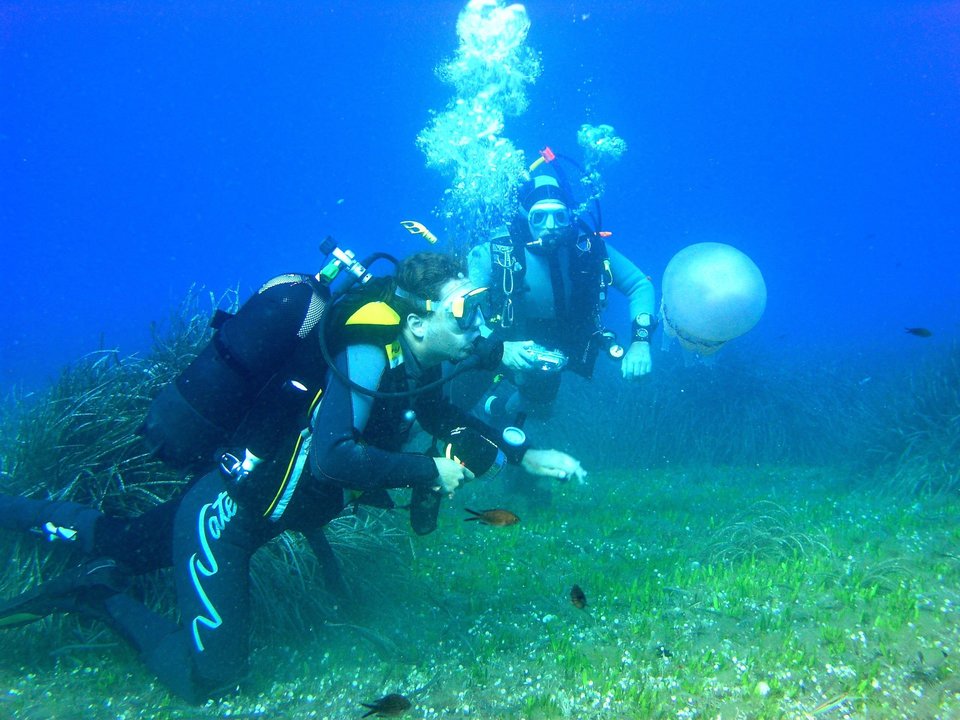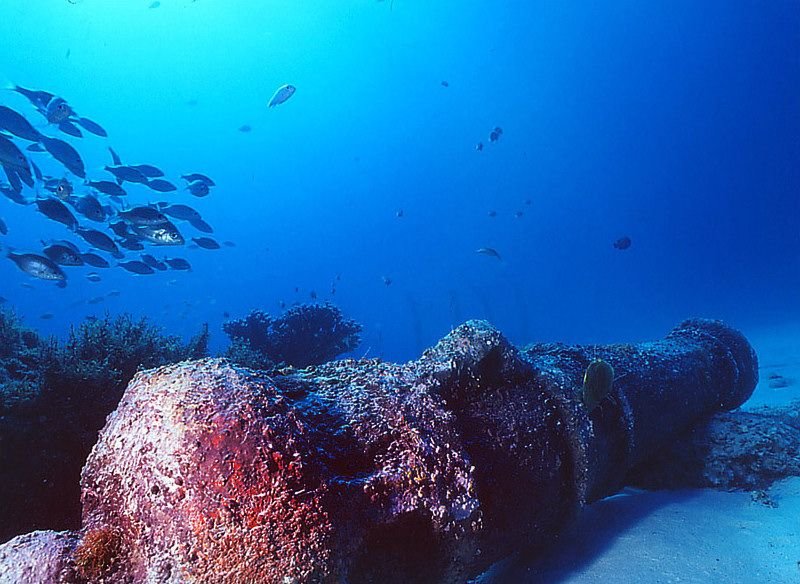Scuba Diving's Colorful History
Scuba diving existed long before Harry Houdini invented his famous diving suit in 1921. In fact, ancient swimmers used hollowed out reeds in order to breathe air from below the waters’ surface— this is the first recorded use of a snorkel. Historical record also supports the claim that a Greek soldier would dive from his Persian King’s ship using a hollowed out reed. This granted him the ability to warn his king of dangers that lay before them, i.e. approaching enemies, shoals or wrecks. There are many interesting innovations that led to the development of todays’ modern scuba diving equipment. We have assembled a chronological list of what we thought to be the most interesting in scuba diving’s colorful history.
- The first goggles were developed by Persian divers around 1300 when they thinly sliced and polished tortoise shells.
- Diving bells did not develop until the 16th century when wooden barrels were used so that divers could now remain underwater with more than just one breath of air. This was still quite useless considering the device only allowed for a little more than a breath of air.
- The first self-contained air device was developed in 1772 but would not have been possible without the invention of an air pump by British engineer, John Smeaton. The air pump connected a hose between it and the diving barrel which allowed the diver to receive air. The 1772 invention by Sieur Freminet, a Frenchman, allowed for the recycling of the exhaled air. This later invention however was poor in design as the inventor himself died due to lack of oxygen after 20 minutes of wearing his own device underwater!
- The year 1825 brought the second invention of an underwater breathing apparatus that allowed for a seven-minute dive. Its’ iron belt was cylindrical in design and attached to the divers helmet.
- A closed circuit, recycled oxygen device was developed in 1876 by Henry Fleuss. The English inventor originally intended the device to be used in the repair of a flooded ships chamber. Henry Fleuss was killed when he decided to use the device for a 30 foot deep underwater dive. What was the cause of death? The pure oxygen contained within his device. Oxygen becomes a toxic element to humans when under pressure.
- In 1911, an oxygen re-breather was released by a German inventor.
- Harry Houdini’s 1921 diving suit was a follow up to an 1873 model built by Benoit Rouquayrol. One benefit of Rouquayrols’ diving suit was that it allowed for a safer air supply. However, this meant wearing a 200 pound scuba suit. Houdini’s modification allowed divers to quickly evacuate their suit, allowing them to safely reach the waters’ surface in case danger was to arise during their dive.
- Four years after the Houdini suit, Yves Le Prieur releases a self-contained underwater breathing unit.
- Swim fins were first patented in 1933 by Louis Ce Corlieu of France. Afterwards he designs a free diving fin.
- The Americans nicknamed the Italians, “The Frog Men” during World War II. The scuba suits worn by the Italians made them look like “frog men.” Scuba diving was a popular tool used by the Italians during this war.
- The modern scuba diving regulator and suit were developed in 1942 by Emile Gagnan and Jacques Cousteau. Their design was a modification of a car regulator. A diver could now automatically breathe in fresh air when underwater.
- Researchers at the University of California designed and developed the first wetsuit in 1956. The Edco Company was the first to publicly produce the suits.
- A piston regulator is introduced in 1958 by Sherwood Manufacturing.
- Prior to 1959, scuba diving was only available to soldiers in the military and individuals involved in underwater explorative projects. The YMCA begins offering a scuba diving class for the everyday citizen.
Next time you are out on the water for a dive; quiz your friends on scuba diving history. Remember to snap some underwater photos and submit them to our Facebook!


Bookmark & Share
User Comments
Be the first to comment on this post below!
Previous Article
Next Article
















